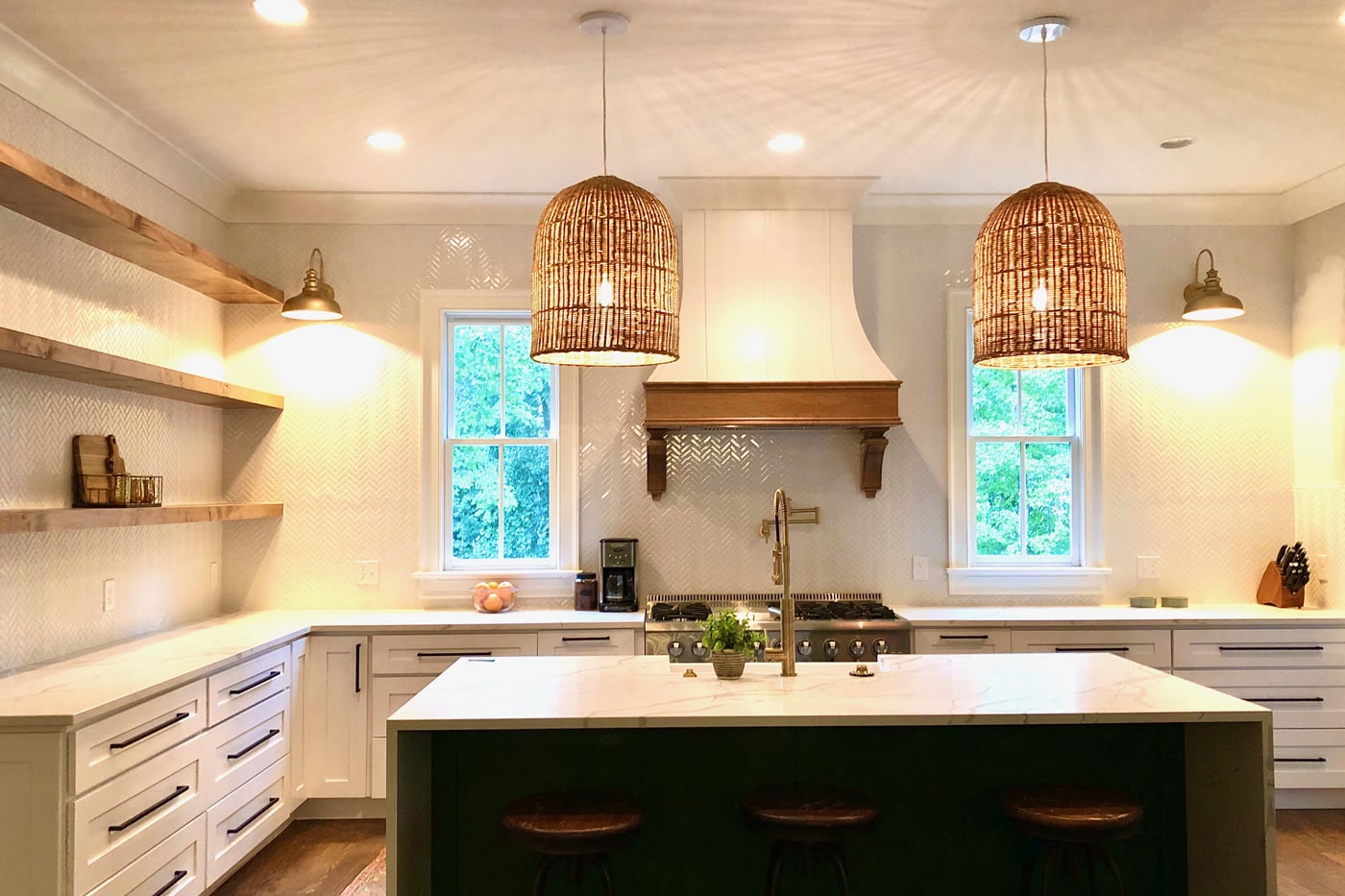As you embark on the journey of renovating your kitchen, the concept of a transitional design may have caught your attention. That’s lovely, but what exactly does a transitional kitchen entail? This kitchen design is the fusion of classic elegance and contemporary flair, creating a space that is both timeless and at the cutting edge of modern aesthetics.
Transitional kitchens embrace the warmth of traditional elements, such as ornate cabinet moldings and rich wood finishes, seamlessly coexisting with the sleek lines of minimalist hardware and the latest high-tech appliances. An advantage of transitional kitchen design is that it allows homeowners to enjoy their nostalgic kitchen setting while relishing 21st-century comfort.
If the allure of a transitional kitchen is still beckoning for your home, look no further—this article is your compass to navigate the journey. Read on to uncover practical tips that will guide you toward achieving the perfect balance of classic and contemporary in your transitional kitchen.
Transitional Kitchen Design Tips
Going practical, here are ten tips you would find helpful in transforming your kitchen into a transitional one.
1. Choose the Right Cabinetry
Cabinets are the focal point of any kitchen, and in a transitional design, they play a pivotal role. For a timeless kitchen design, opt for cabinet doors with simple, clean lines and minimal ornamentation. Shaker-style cabinets have a timeless appeal and often fit perfectly into this aesthetic. You can select cabinets with a classic wood finish and pair them with sleek, modern hardware for an instant transitional look.
2. Harmonize Color Schemes
Balancing color palettes is key to transitional design. Neutral shades like whites, grays, and beige provide a versatile canvas. Classic kitchens favor rich, warm tones, while contemporary designs lean towards cooler, muted colors. For a transitional kitchen color scheme, you can blend these spectra by incorporating warm woods with neutral base colors and subtle pops of color in accents like backsplashes or decorative items.
3. Mix Materials
Transitional kitchens thrive on the art of contrast. Pair traditional materials like granite or marble countertops with modern stainless-steel appliances. Use the interaction between textures and finishes to add depth and character to your kitchen. Endeavor to incorporate a mix of glass, stone, and wood to strike the right balance.
4. Pay Attention to Details
Small design elements can make a big difference. For example, crown molding, wainscoting, and decorative accents can add a classic touch, while sleek, unadorned edges and minimalist hardware contribute to the contemporary aspect. The crucial thing is to avoid doing it excessively. Choose a few classic elements to contrast with the modern ones for a tasteful blend.
5. Experiment With Lighting
Do not underestimate the effects lighting can have on your kitchen. With some creative application, lighting can help you achieve a transitional kitchen. Pendant lights with classic shapes can bring a touch of traditional elegance, while recessed lighting and under-cabinet LED lights enhance the contemporary ambiance.
Since transitional kitchen design is about bridging kitchen eras, mix various lighting sources to create different moods, making your kitchen versatile and inviting.
6. Streamline Appliances
Modern appliances are remarkable for their sleek, minimalist designs. Stainless steel appliances fit seamlessly into transitional kitchens. The new kitchen devices’ appearance in your traditional kitchen brings a beautiful contrast. After all, the most evident hallmark of transitional kitchen design is a marriage of practicality and aesthetics. Where you can, ensure you integrate your appliances into the cabinetry to maintain a clean and uncluttered look.
7. Choose Timeless Flooring
Select flooring that can withstand changes in design trends. Natural surfaces like wood or wood-appearing flooring are typical transitional kitchen trends. Hardwood floors are a fantastic choice because they add warmth and essence to your kitchen. Also, to add a modern touch to your flooring, consider large-format tiles or stained concrete, which are easy to maintain.
8. Choose Your Accessories Wisely
Your choice of accessories should have a classic and contemporary blend. Incorporate decor items and kitchenware that exhibit a mix of styles. Think about open shelving to display traditional dinnerware and modern cookware and utensils.
9. Keep It Functional
A transitional kitchen should encompass both elegance and functionality. Carefully plan your kitchen layout to ensure efficiency and organization. Think of how best you can use your kitchen. The best design is one that works seamlessly with your daily routines.
10. Personalize Your Space
Lastly, don’t forget to add personal touches. Your transitional kitchen should bear something about your personality or history. Whether it’s your family photos, artwork, or a collection of heirloom items, these details make your kitchen uniquely yours while enhancing the transitional design.
Conclusion
Now, you don’t have to worry about bridging a classic kitchen design with a modern one. Transitional kitchen design ensures you get the best of both kitchen worlds.
Overall, creating a transitional kitchen principally entails balancing classic and contemporary elements. Put into practice almost or all the tips shared above to infuse your culinary space with the charm of the past and modern practicality.
